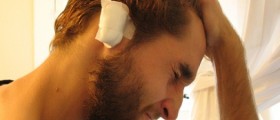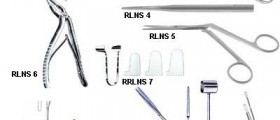
Rhinoplasty is the surgical method that changes the physical appearance of thenose. It is commonly referred to as a nose job, and employs differenttechniques to achieve a number of different results. A septorhinoplastyis a rhinoplasty during which a septoplasty is simultaneously carriedout. During this procedure the septum - the part of the nose thatseparates it into two sections - is corrected.
There are many reasons people have rhinoplasty. First of all, nasalfractures are some of the most common injuries around, so rhinoplastyis often performed to correct the damage that was done after injury.Breathing difficulties are another common reason for rhinoplasty. Then,some people are unhappy with the appearance of the nose and haverhinoplasty purely for cosmetic reasons. This can be a small change,but sometimes operations are performed that completely change thestructure of the nose. Cartilage, the bone-like tissue that supprt thenose, can be reshaped during rhinoplasty, added to or taken away from.
Doctors do not recommend rhinoplasty for patients in their early teensand under, because the cartilage still grows and changes at that stagein life. Nose jobs have the best results patients reach around 18 yearsof age.
The majority of patients undergoing a nose job do so under generalanesthesia, but so-called "twilight" anesthesia combined with localanesthesia is common too. The type of anesthesia is a personal choicethat is best reached in consultation with the surgeon performing theoperation.
Recovery from rhinoplasty is relatively speedy. The nose tends to beswollen after surgery, and bandages and splints are often applied for afew days after the operation. It is possible that the nose will betender and painful, but swelling is the main reason rhinoplastypatients usually take leave from work for a week. Heavy and prolongedactivity is discouraged for three weeks after surgery. The swellingsubsides dramatically in the first week after rhinoplasty, but actuallytakes one year to disappear completely. Before going in for surgery, the patient can describe their wishes tothe surgeon and make a surgical plan on the basis of surgical analysis.The surgeon will use their knowledge and experience to create a nosethat is suits the other facial features of the patient.
When rhinoplasty is performed to correct breathing problems, theoperation is often covered by insurance policies, but cosmeticprocedures are not covered by insurance unless there is severedisfigurement. When there is an overlap of cosmetic and medical reason,insurance may pay part of the procedure.
Any surgery carries risks, and rhinoplasty is no exception.Complications are very rare with rhinoplasty though, and most patientsare very satisfied with the results of their operation. Some people dogo in for an additional nose job to improve their looks. Afterrhinoplasty, pain killers are prescribed to help the patient copewith post-operative pain. The majority of rhinoplasty patients do notexperience more than discomfort and pressure in the days afteroperation. A degree of bleeding is normal after the surgery, and manypatients report a numbness in all or part of the nose after their nosejobs.
Nose jobs vary greatly in price, and depend on location and thereputation and experience of the surgeon. The typical cost of a nosejob, with all fees and anesthesia included is anywhere from $4000 to$7000.
















Your thoughts on this
Loading...